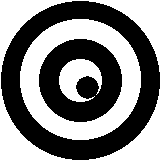Nearly all the prescribed arm-movements in the Country Dance relate to the joining of hands. Of ornamental or fanciful movements there are none, nor any of formal design that are devised - like many of the arm-movements of the Morris Dance - to assist the actions of the dancer. Nevertheless, perhaps for this reason, the carriage and manipulation of the hands and arms form a very characteristic feature of the Country Dance.
It may be taken as a general rule that when the arms are not in active use, i.e., when they are not being employed for some specific purpose, they should be allowed to swing quietly and loosely by the side. This involves complete relaxation of the muscles that control the shoulder, elbow, and wrist joints, and the capacity to resist sympathetic, involuntary tension in other muscles.
The dancer may sometimes find it necessary to make use of his arms to maintain his balance, e.g., to throw out the outside arm when moving swiftly round a sharp curve. This is permissible, provided that such movements are made only when really necessary, simply, and without exaggeration.
All the prescribed hand and arm movements in the Country Dance have definite purpose, and in their execution no more is required of the dancer that that he should fulfil this purpose effectively and in the simplest and most direct way. For instance, in "leading" the taking of hands is not a mere formality; the dancer should actually lead - that is, support his partner, guide and regulate her movement.
THE JOINING OF HANDS.
In linking right hand with right, or left with left, the hands are held sideways (i.e., in a vertical plane), thumbs uppermost and brought lightly together, not clenched, the four fingers of each hand resting on the palm of the other, and the thumb pressing on the knuckle of the middle finger. The hands should be joined in this manner in leading, in handing in the Hey, and in the Turn-with-one-hand.In joining inside hands, that is, right hand with left, or left hand with right, e.g., in rings, the Turn, the Poussette, etc., the man holds his hand palm upward, the woman places her hand in his, and the fingers are clasped as before.
When two men or two women join hands inside hands, it is suggested that the dancer having the lower number should always take the man's position (i.e., give his hand palm upward).
Page transcribed by Hugh Stewart
